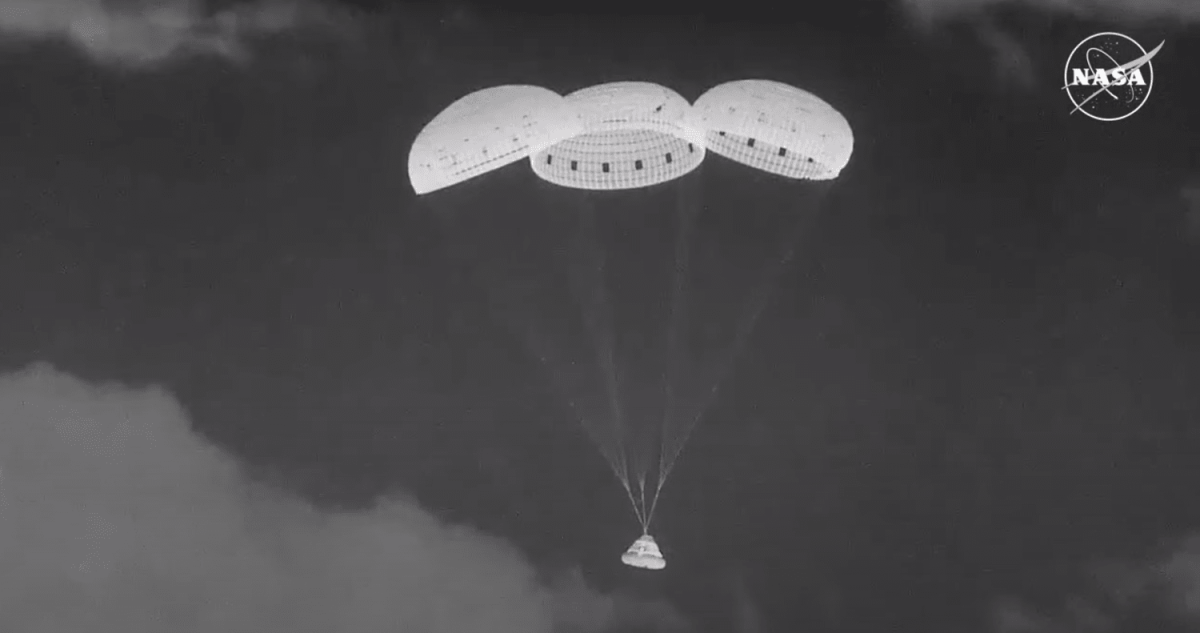The Summary
-
Boeing officials have made few public comments about the company’s Starliner spacecraft over the last six weeks.
-
The capsule returned to Earth on Saturday without a crew, ending a problem-plagued test flight.
-
Boeing representatives did not appear at the post-landing briefing, even though they were initially scheduled to do so.
Just over an hour after Boeing’s Starliner capsule made its uncrewed return to Earth, NASA convened a standard post-landing briefing to discuss the end of the tumultuous test flight.
Conspicuously absent from that event early Saturday morning: any official from Boeing.
In fact, the last time Boeing representatives participated in a news briefing about the Starliner mission was in late July. At that time, the capsule had already spent weeks longer than expected at the International Space Station due to hardware issues, and questions were swirling about whether the two NASA astronauts who rode the Boeing-made vehicle to orbit could safely return in it.
NASA officials have said they are committed to working closely with Boeing, but the company’s absence from events and its limited public statements have raised questions about Boeing’s commitment to transparency and the future of the Starliner program.
Boeing did not respond to multiple requests for comment about the company’s change in public visibility.
Ahead of the post-landing news conference last week at the agency’s Johnson Space Center in Houston, a NASA public advisory included the names of two Boeing officials slated to take part.
Eric Berger, a senior editor for Ars Technica who was there, wrote on X that two chairs had been removed from the dais shortly before the briefing began. The lineup appeared to have been changed at the last minute.
Just confirmed that there will be no Boeing representatives at the post-landing Starliner news conference. (John Shannon and Mark Nappi were originally supposed to be here). Asked NASA why. Response: “You’ll have to ask them.” So what’s up @BoeingSpace?
— Eric Berger (@SciGuySpace) September 7, 2024
It’s seemingly a last minute change because there were five chairs set up at the news conference here at JSC, and they just removed two seats right now.
— Eric Berger (@SciGuySpace) September 7, 2024
Joel Montalbano, the deputy associate administrator of NASA’s Space Operations Mission Directorate, was asked about Boeing’s absence during the briefing
“We did talk to Boeing before this. They deferred to NASA to represent the mission,” he said.
In response to an NBC News inquiry days later, a NASA spokesperson referred back to Montalbano’s response at the news conference.
Instead of appearing at the briefing, Mark Nappi, vice president and program manager of Boeing’s Commercial Crew Program, issued a statement on the company’s website.
“I want to recognize the work the Starliner teams did to ensure a successful and safe undocking, deorbit, re-entry and landing,” he wrote. “We will review the data and determine the next steps for the program.”
Boeing said the capsule would be taken to NASA’s Kennedy Space Center in Florida, where engineers will analyze data from the flight. No other details were provided about the status of the spacecraft.
Starliner launched astronauts Butch Wilmore and Suni Williams to the International Space Station in early June. The capsule’s first crewed test flight, the mission was expected to last around eight days. But helium leaks in the spacecraft’s propulsion system and thruster malfunctions that cropped up as it was docking with the space station sidelined the Starliner and its crew in space for months.
NASA held several media briefings over the summer to provide updates about the ongoing investigations into the thruster problems and what the findings could mean for the remainder of the flight. Early on, NASA and Boeing officials jointly appeared at the briefings, but Boeing representatives were not included in any news conferences in August.
That month, NASA was deliberating about how and when Wilmore and Williams could be brought home safely. Agency officials were asked about Boeing’s absence at most of those August briefings and said the company’s representatives were not taking part because the updates concerned NASA deliberations.
On Aug. 24, the agency announced that it would call on SpaceX to bring the astronauts home and send Boeing’s Starliner back to Earth without a crew onboard. The pair is scheduled to stay at the space station until February then return with members of an upcoming ISS crew.
In a statement on X following NASA’s decision, Boeing wrote: “We continue to focus, first and foremost, on the safety of the crew and spacecraft. We are executing the mission as determined by NASA, and we are preparing the spacecraft for a safe and successful uncrewed return.”
The Starliner capsule ultimately returned to Earth smoothly, landing at New Mexico’s White Sands Space Harbor just after midnight on Saturday.
The crewed test flight was intended to demonstrate that Boeing could reliably ferry astronauts to and from the space station, paving the way for NASA to certify it for routine flights to the orbiting lab.
Boeing developed its Starliner spacecraft under NASA’s Commercial Crew Program, an initiative launched in 2011 to support privately built space vehicles in order to fill the gap left by NASA’s retired space shuttles.
Even before the most recent flight, the Starliner program was more than $1.5 billion over budget and years behind schedule. In 2019, an uncrewed test flight to the space station was cut short because of technical glitches and the company was forced to repeat it in 2022.
Rival company SpaceX developed its Crew Dragon spacecraft as part of the same program and has been conducting routine flights to and from the space station since 2020. NASA has said it wants both private companies certified for such flights in order to have redundant options for reaching low-Earth orbit.
This article was originally published on NBCNews.com

Dr. Sarah Adams is a scientist and science communicator who makes complex topics accessible to all. Her articles explore breakthroughs in various scientific disciplines, from space exploration to cutting-edge research.







